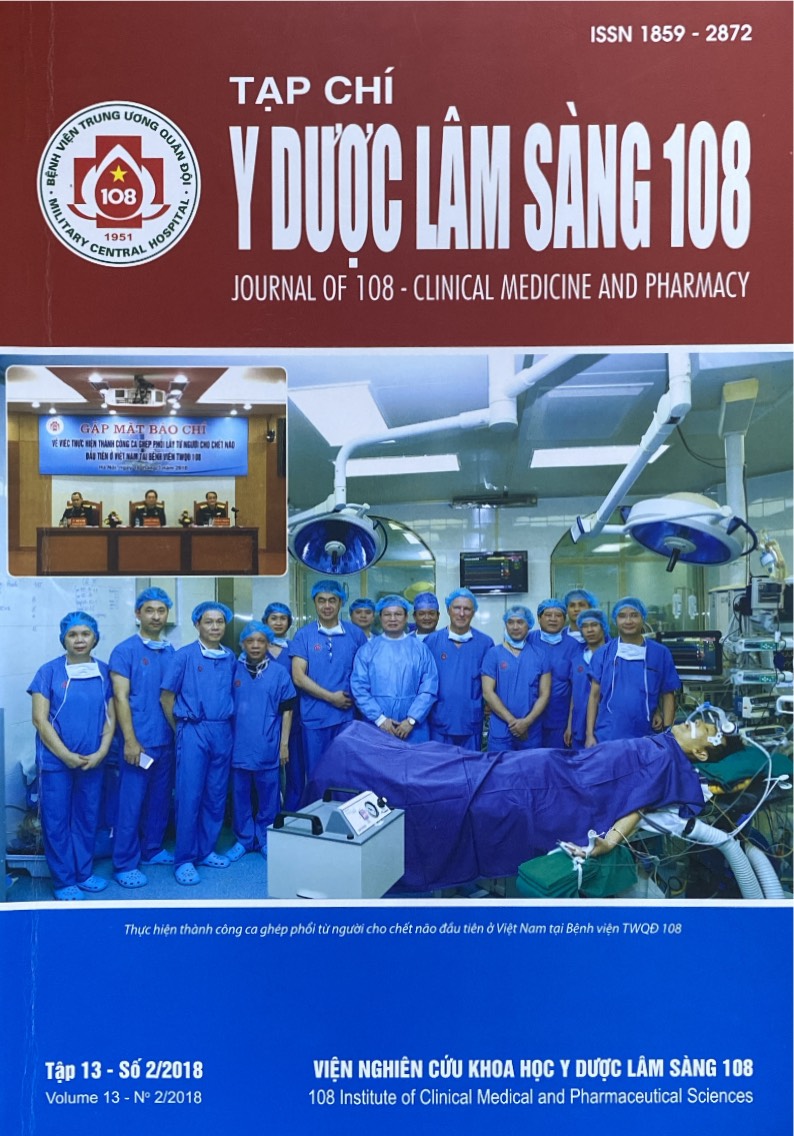Characteristics of type of supraventricular tachycardia attack between young and elderly patients were cardiac electrophysiology study
Main Article Content
Keywords
Abstract
Objective: Describe of type of characteristics of supraventricular tachycardia (SVT) attack between young and elderly patients and other arrhythmias on the patients were cardiac electrophysiology study. Subject and method: Cross sectional descriptive study, and prospective study. 186 patients were diagnosed with the SVT attack were cardiac electrophysiology study at Vietnam Heart Institute during January 2014 to May 2017. The patients were divided into two groups: Group I (n = 95) is the young group (< 60 years of age) and group II (n = 91) is a elderly group (≥ 60 years of age). Result: Group I (young group) had 51.1% and group II (elderly group) had 48.9%. Characteristics of the SVT attack have 68.3% AVNRT, 29.6% AVRT and 2.2% AT were met in Wolff-Parkinson-White (WPW) syndrome patients. The female had 69.4% of SVT attack were more than male patients had 30.6%; the female had atrioventricular nodal reentrant tachycardia (AVNRT) and atrioventricular reentrant tachycardia (AVRT) were 74.8% and 61.8%, respectively, only 9.8% of the patients had WPW syndrome by Electrocardiogram (ECG), atrial fibrillation-flutter (AF-Flutt) met in 15.6% and branch block met in 5.9%, the eldely patients have atrial fibrillation-flutter (24.2%) more than young patients group (7.4%), p<0.05. Conclusion: The supraventricular tachycardia attack were more common in female more than male patients, the likehood of having AVNRT was higher than the AVRT attacks, the mean age of AVNRT and AVRT attack were the elderly patients more than the young patients, the rate of atrial fibrilation-flutter was relatively common in the SVT attacks and in elderly patients group, WPW syndrome was associated with the SVT attacks in clinical, and ECG of out of attacks in the elderly group having AVRT attack was higher than the young patients group.
Article Details
References
2. Phan Đình Phong (2005) Nghiên cứu điện tâm đồ bề mặt và trong buồng tim của cơn tim nhanh vào lại nút nhĩ thất hoặc vào lại nhĩ thất. Luận văn tốt nghiệp bác sỹ nội trú bệnh viện, Trường Đại học Y Hà Nội.
3. Trần Song Giang (2012) Nghiên cứu đặc điểm điện sinh lý và điều trị nhịp nhanh do vòng vào lại nút nhĩ thất bằng năng lượng sóng có tần số radio. Luận án Tiến sỹ Y học, Trường Đại học Y Hà Nội.
4. Trần Thành Đạt và CS (2012) Khảo sát tình hình cơn nhịp nhanh kịch phát trên thất chẩn đoán - hướng xử trí tại Khoa Hồi sức cấp cứu - Bệnh viện Đa khoa Bà Rịa. Tạp chí Y học thực hành, số 1 năm 2012.
5. Trần Văn Đồng (2006) Nghiên cứu điện sinh lý tim và điều trị bệnh nhân có hội chứng Wolff-Parkinson-White bằng năng lượng có tần số radio. Luận án Tiến sỹ Y học, Học viện Quân y.
6. Bottoni N, Tomasi C, Donateo P et al (2003) Clinical and electrophysiological characteristics in patients with atrioventricular reentrant and atrioventricular nodal reentrant tachycardia. Europace 5(3): 225-229.
7. Canonico V, De CL, Vigorito C et al (1990) Differences in blood pressure profile between young and elderly hypertensive patients. J Hum Hypertens 4(4): 405-409.
8. Chen SA, Chiang SA, Yang CJ et al (1994) Accessory pathway and atrioventricular node reetrant tachycardia in elderly patients: Clinical features, electrophysiologic characteristics and results of radiofrequency ablation. J Am Coll Cardiol 23: 702-708.
9. De MM, Jacobs P, Haardt R, Englert M (1986) Variations of normal sinus node function in relation to age: Role of autonomic influence. Eur Heart J 7(8): 662-672.
10. Randall AC, Mitchell JS, Jay S et al (2010) Common types of supraventricular tachycardia: Diagnosis and management. American Family Physician 82(8): 942-952.
11. Stellbrink C, Diem B, Schauerte P et al (2001) Differential effects of atropine and isoproterenol on inducibility of atrioventricular nodal reentrant tachycardia. J Interv Card Electrophysiol 5(4): 463-469.
12. Yangni N’Da’ O, Brembilla-Perrot B (2008) Clinical characteristics and management of paroxysmal junctional tachycardia in the elderly. Archives of Cardiovascular Diseases 101(3): 143-148.
 ISSN: 1859 - 2872
ISSN: 1859 - 2872
